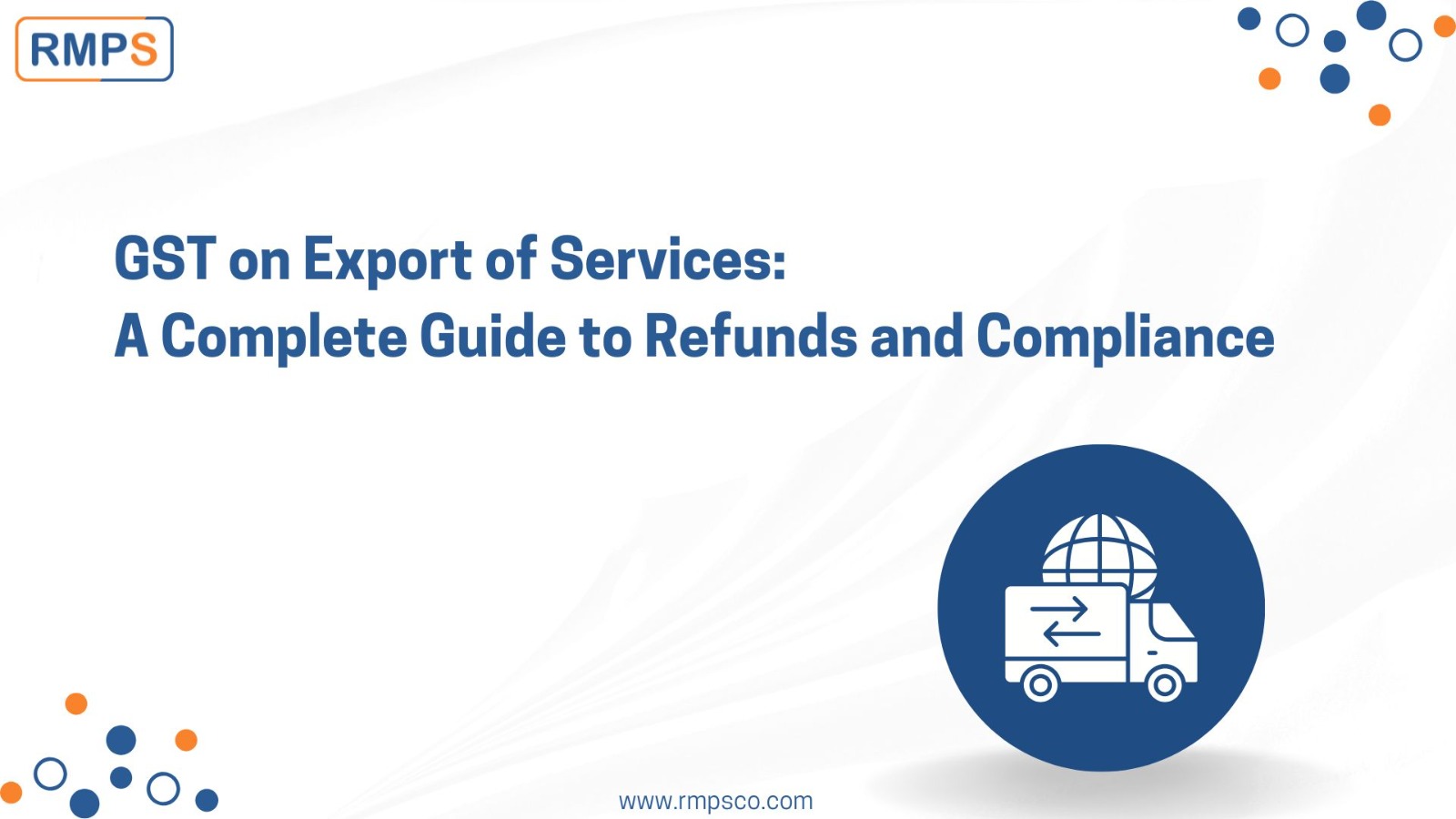
GST on Export of Services offers several advantages, yet businesses must navigate tax compliance requirements carefully. This guide simplifies the GST framework for exporting services, covering refunds, compliance, and essential documentation to ensure a smooth process.
Table of Contents
- Understanding GST on Export of Services
- Eligibility Criteria for Export of Services
- Key Benefits of Exporting Services Under GST
- Refund Process for Exporters
- Important Documents for Exporting Services
- Step-by-Step Guide to Filing a Refund
- Conclusion: Ensuring Smooth GST Compliance
- Frequently Asked Questions
Understanding GST on Export of Services
Under GST, the export of services is classified as a zero-rated supply, meaning that businesses do not have to pay GST on such transactions. This exemption helps Indian service providers stay competitive in the global market while ensuring tax neutrality. However, exporters must meet strict compliance requirements to benefit from tax refunds and avoid delays.
Eligibility Criteria for Export of Services
For a service to qualify as an export, the following conditions must be met:
- The service provider must be registered in India.
- The recipient must be located outside India.
- The place of supply must be outside India.
- The payment must be received in convertible foreign exchange or INR as permitted by the RBI.
- The service provider and recipient should not be merely establishments of the same entity.
Meeting these conditions allows businesses to claim GST refunds and benefit from tax exemptions.
Key Benefits of Exporting Services Under GST
- Zero Tax Burden: Since exports are zero-rated, no GST is levied on these services.
- Refund of Input Tax Credit (ITC): Exporters can claim ITC on the GST paid for inputs, reducing overall tax costs.
- Enhanced Cash Flow: Refunds ensure liquidity and smooth financial operations.
- Competitive Advantage: Tax exemptions allow Indian businesses to offer competitive pricing globally.
By leveraging these benefits, businesses can streamline their financial planning while remaining GST-compliant.
Refund Process for Exporters
Exporters can claim GST refunds through two methods:
- Export Under LUT (Letter of Undertaking): No GST is paid, and ITC can be claimed as a refund.
- Export With Payment of IGST: Businesses pay IGST on exports and later apply for a refund.
Steps to Claim a GST Refund
- Log in to the GST portal and go to Services > Refunds > Application for Refund.
- Select Exports of Services with Payment of Tax and enter the tax period.
- Click Create Refund Application and proceed with the required details.
- If applying for a nil refund, select Yes; otherwise, select No and continue.
- Download Statement 2, fill in the details, and upload it back to the portal.
- Validate and submit the refund application.
- Select the bank account for the refund.
- File the application using DSC or EVC.
- Upon submission, an Application Reference Number (ARN) is generated for tracking.
Timely submission of refund applications ensures a smooth approval process and quick disbursement of funds.
Important Documents for Exporting Services
Proper documentation is essential for compliance and refund processing. Exporters must maintain:
- Invoices: Clearly detailing the nature of the service and tax applicability.
- Foreign Exchange Proof: Evidence of payments received in convertible foreign currency or RBI-approved INR transactions.
- LUT/Bond: Required for tax-free exports.
- Shipping Documents: If applicable, to validate service delivery.
- Declaration under Section 54(3): Supporting compliance for refunds.
- BRC/FIRC: Bank Realization Certificate or Foreign Inward Remittance Certificate proving receipt of sales proceeds.
- Copy of GSTR-2A: To substantiate tax credits claimed during the relevant period.
- Statement 2 under Rule 89(2)(c): Documenting details of export transactions.
- Statement of Invoices (Annexure-B): Supporting invoice verification.
- Self-Certified Copies of Invoices (Annexure-A): For invoices not appearing in GSTR-2A.
- Self-Declaration for Non-Prosecution: Under Rule 91 of the CGST Rules, required for provisional refunds.
Having these documents readily available helps expedite refund claims and ensures smooth tax compliance.
Step-by-Step Guide to Filing a Refund
1. Download and Prepare Statement 2
- Download the offline utility from the GST portal.
- Enter export details, including invoice numbers and tax paid.
- Validate and save the file in JSON format.
2. Upload the Statement
- Navigate to Export of Services – With Payment of Tax on the GST portal.
- Click Upload Statement and select the JSON file.
- Validate the upload and ensure all details are correct.
3. Submit the Refund Application
- Select the refund amount (auto-populated based on uploaded details).
- Choose the bank account for refund disbursement.
- Upload additional supporting documents if required.
- File the application using DSC or EVC.
Once submitted, the tax department reviews the application, and upon approval, refunds are processed.
Conclusion: Ensuring Smooth GST Compliance
Exporting services under GST offers multiple benefits, but businesses must adhere to compliance requirements for a hassle-free experience. Maintaining proper records, filing refund applications on time, and staying updated on GST regulations help businesses optimize their tax efficiency.
For businesses aiming to simplify GST compliance, seeking expert assistance can enhance accuracy and expedite refund processing.
Frequently Asked Questions (FAQs)
Q1. What is the export of services under GST?
Exporting services means providing services to foreign clients without paying GST, making them zero-rated supplies.
Q2. What qualifies as an export of services?
Services qualify as exports if the supplier is in India, the recipient is outside India, and payments are received in foreign exchange or as per RBI norms.
Q3. How do GST refunds work for exporting services?
Refunds can be claimed by filing Form RFD-01 and submitting required documents through the GST portal.
Q4. How can businesses claim a GST refund for exported services?
Exporters must provide invoices, foreign exchange proof, and other supporting documents when filing refund applications.
Q5. How long does it take to process a GST refund?
The refund process generally takes 60 days, with interest applicable for delays.
LinkedIn Link : RMPS Profile
This article is only a knowledge-sharing initiative and is based on the Relevant Provisions as applicable and as per the information existing at the time of the preparation. In no event, RMPS & Co. or the Author or any other persons be liable for any direct and indirect result from this Article or any inadvertent omission of the provisions, update, etc if any.
Published on: February 19, 2025
